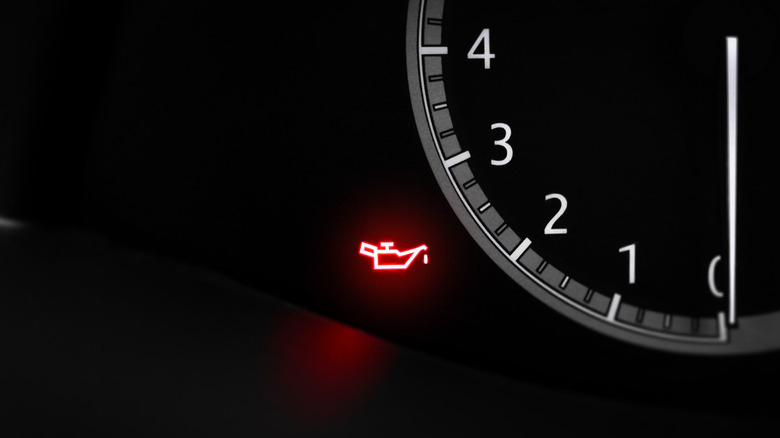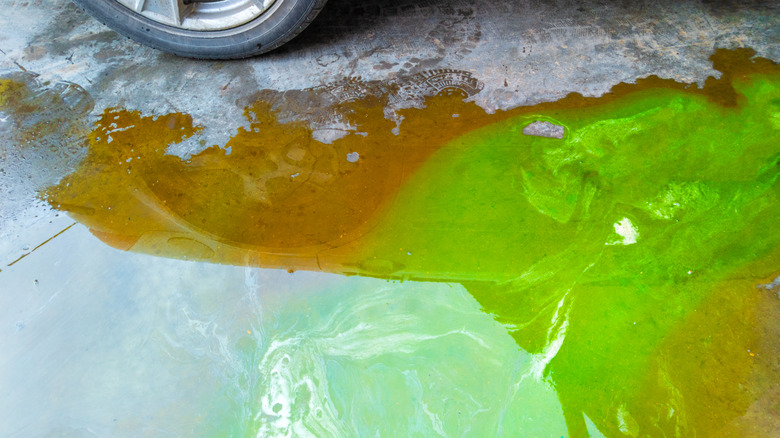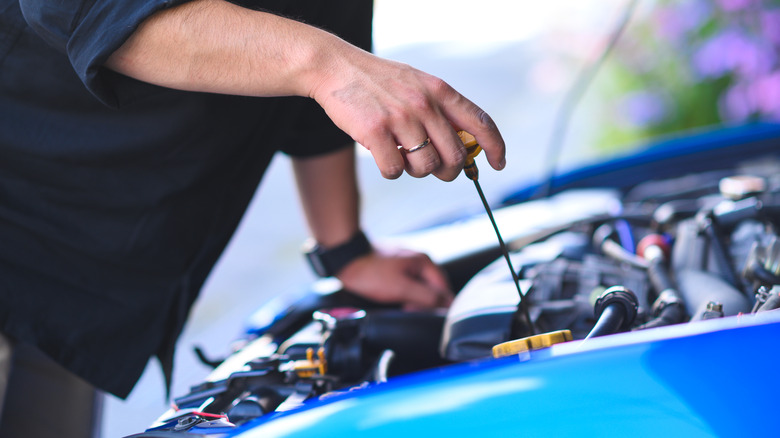What It Means If You See Bubbles On Your Oil Dipstick
While a lot of car repair and maintenance requires some effort and knowledge of automobiles, there are some things even the most inexperienced can do. Alongside little things, like changing windshield wipers and refilling tires, there's also checking the oil level. You can read your vehicle's oil level with the dipstick located under the hood, but that's not all this little checkup can tell you about your ride's health. The appearance of the oil itself can tell you if all is well with your vehicle, or if there's something to be concerned about. For instance, there's a chance that when you check the oil on your dipstick, it could have small bubbles within it.
This isn't the usual appearance of oil within a vehicle and can come as a result of a few different things. One common cause of bubbles is that the sump has been overfilled with oil and the internals of the engine have introduced excess air to the system, creating bubbles. If this is the case — something that can be measured with a vehicle's dipstick — you should drain as much oil is necessary to bring the level back to normal. This can be done by draining from the oil pan plug underneath the car, or through the dipstick tube with the aid of an oil extractor. Ideally, this will solve the bubbling issue.
If this isn't the situation at hand, there could be more trouble to deal with. In a worst case scenario, a coolant leak into the oil supply could lead to small bubbles, and much worse.
What to do if a coolant leak has created bubbles in your oil
Should an excess of oil not be the reason for bubbles on a dipstick's oil sample, it could be a symptom of a much bigger issue. When coolant — which isn't quite the same as antifreeze — is introduced into a vehicle's oil supply, it can result in the oil taking on a frothy, bubbly appearance. This can be attributed to worn gaskets, cracks in the engine block, or a blown head gasket, among a handful of other broken down parts. If coolant has made it way into the oil, other symptoms are likely to crop up like engine overheating, a sweet smell and white smoke coming from the exhaust, and a lighter brown color to the oil itself.
As one could imagine, coolant mixing with oil, and the potential reasons behind it, are nothing to ignore. If these symptoms pop up consistently, the vehicle shouldn't be driven as normal, as something as extreme as engine failure could be on the horizon. Thus, the vehicle should be taken to a mechanic for proper diagnosis and repair. In the meantime, cracks can be sealed as a temporary fix, the existing coolant and oil should be flushed out and replaced, and looking over potentially bad gaskets can all be done. Unfortunately, repair costs range from a few hundreds to well into the thousands, depending on the damage.
Bubbles are just one point of concern that can be spotted on a vehicle's dipstick. There are other changes to engine oil to keep an eye out for that can indicate internal issues.
What else can dipstick oil reveal about a vehicle's condition?
A coolant leak or additional air being present are only two of many things that can impact the appearance and performance of oil. Something many drivers might forget about is getting their oil changed, or changing the oil in their cars themselves. Using the oil dipstick, you can tell when its time to flush out the old and replace it with the new by looking at the consistency of the oil sample. If it appears thick, sludgy, and dark, a replacement is definitely overdue. Also, if small particles of dirt and debris are present within, that's another indicator it's time for an oil change.
Something else to keep an eye out for isn't the quality of the oil on the dipstick, but the amount in your vehicle. As mentioned, too much oil within a vehicle can lead to added air in the system, hence the small bubbles. However, if you see a reading of too little oil, especially if the oil was recently changed, there could be a list of issues to contend with. There could be an oil leak somewhere in your vehicle, oftentimes evidenced by a drip and puddle somewhere underneath the car. If not, a bad valve seal, bad piston rings, or bad cylinder walls can mean your vehicle is burning oil.
Oil is a major element to keeping a vehicle running smoothly and efficiently. Something as seemingly innocuous as small bubbles or a slow drip could indicate something is amiss under the hood, and you should seek out answers quickly.


